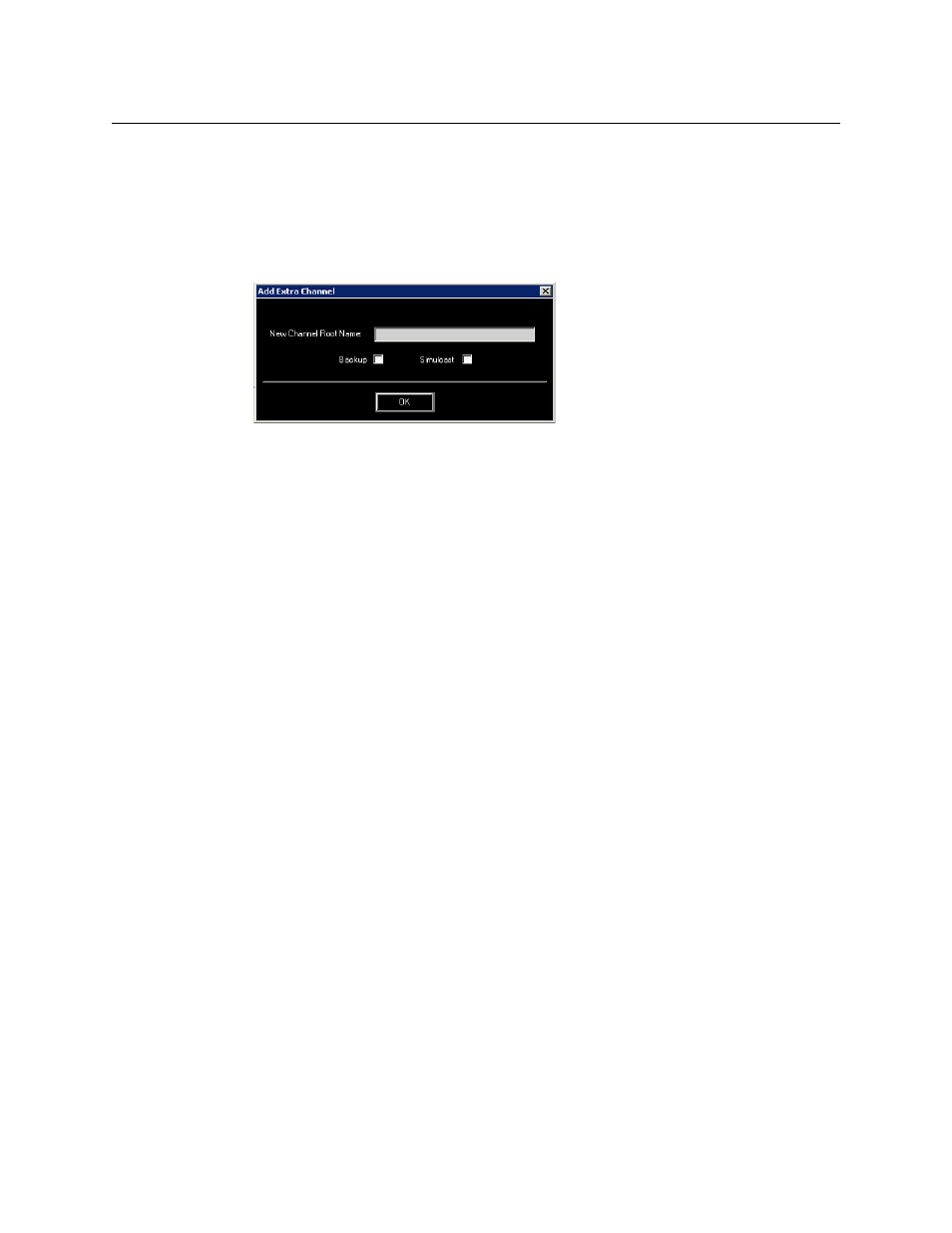Creating a dual channel itx system – Grass Valley iTX Output Server 2 v.2.6 User Manual
Page 33

27
iTX Output Server 2
Channel Configuration Guide
• Corvid 44, Dual Channel
• Corvid 88, Simulcast
• Corvid 88, Dual Channel
The Add Extra Channel button appears at the bottom of the dialog.
3 Click Add Extra Channel.
The Add Extra Channel dialog appears.
4 In the New Channel Root Name field, type the basic name for the extra channel, as per
About the iTX Channel Config Dialog
5 Define the channel’s function:
a If you are creating a backup channel, check Backup.
b If you are creating a simulcast channel, check Simulcast.
c If you are creating a simulcast backup channel, check both Backup and Simulcast.
6 Click OK.
The Add Extra Channel dialog closes.
7 On the iTX Channel Config dialog, the following details are displayed:
• The Root Name field will display the name of the new channel.
• The Channel Name drop-down menu will now include the new channel name with
the appropriate suffixes (e.g.
-BACKUP
for a backup channel,
-SIM
for a Simulcast
channel or both).
You can select each channel from the Channel Name drop-down list and configure
them individually, as required.
8 Click SAVE.
The iTX Channel Config window closes.
9 If you are adding a channel as part of an installation, complete the installation as
normal.
10 Apply any additional configuration that is required for your playout server. See
Server 2 Channel Configuration
on page 29 for more information.
Creating a Dual Channel iTX System
iTX allows for two different channels to operate on a single playout server (for example
channel A main and channel B backup), providing it has a compatible SDI I/O card installed.
For more information see
To create a dual channel system on a single playout server:
1 If is it not currently running, start TXPlay 2 Config by double-clicking on the TXPlay 2
Config icon on the Windows Desktop.
